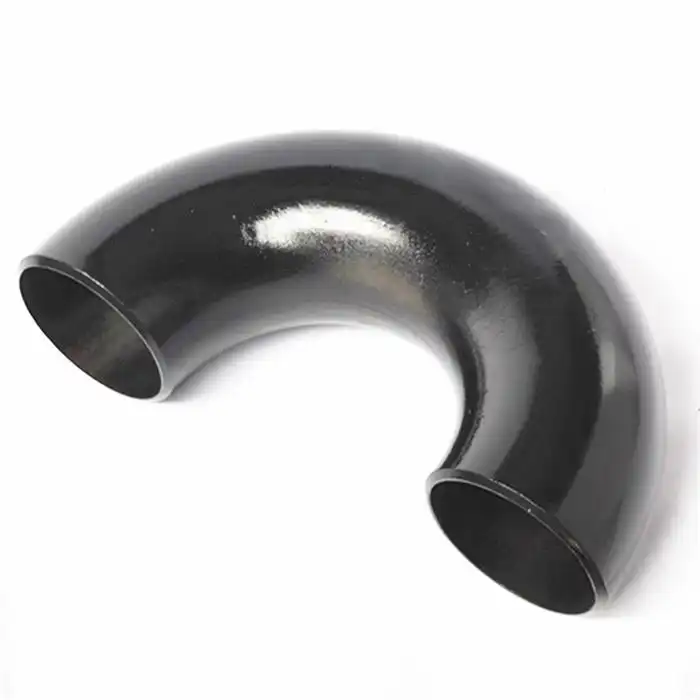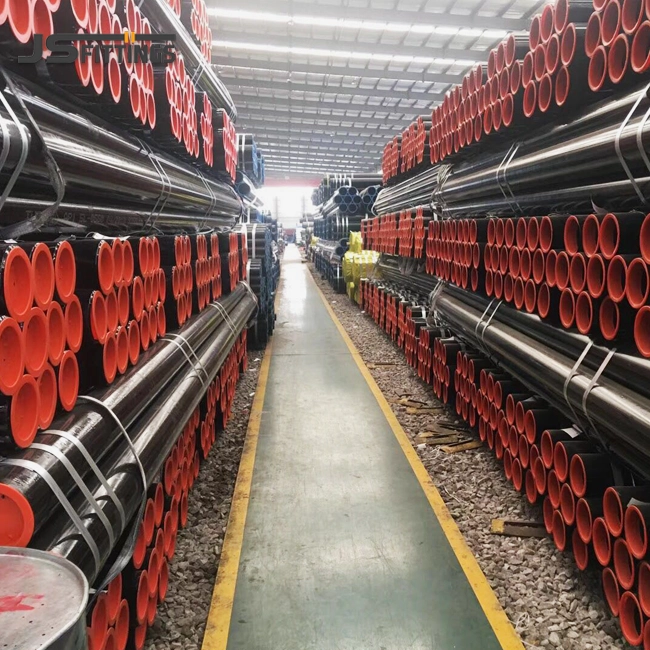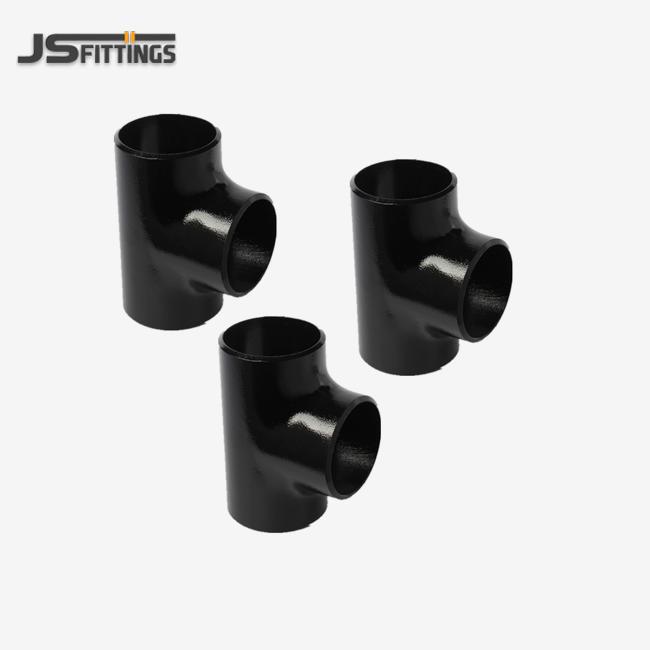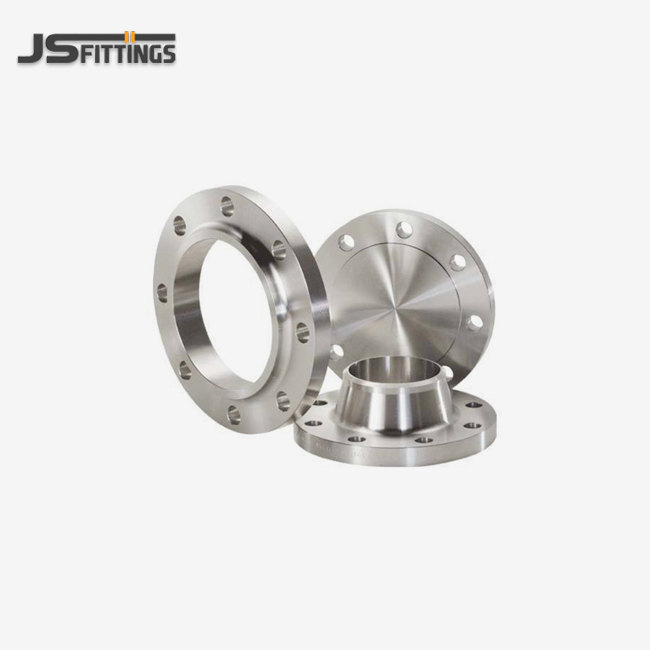Why choose a steel pipe cross instead of a tee in certain pipeline layouts?
There are a few main reasons why people choose to use a steel pipe cross over a tee in pipeline plans. These reasons can have a big effect on how well and how efficiently the system works. There are many useful and complicated ways to arrange pipes, and cross fittings are one of the best ways to do it. Being able to work in more than one way is useful when more than one flow line needs to join or split off from the same spot.
Reduced Number of Fittings and Connections
Engineers can cut down on the number of fittings and links needed in a pipeline system by choosing a cross fitting over multiple tees. Having less to do speeds up the building process and cuts down on the places water could get in. The method is now more stable and doesn't need to be fixed as often.. Because of this, the system is more stable and doesn't need as much upkeep. Because cross-fits use fewer parts, they can save you money on both materials and labor. This makes them a good choice for many jobs.
Enhanced System Compactness
In industrial settings where space is limited, the fact that cross fittings are small can be a big plus. Multiple tees and straight pipe pieces can be replaced with a single butt weld steel pipe cross, which makes better use of the space. This small size is very helpful on remote platforms, in chemical plants, and other places where there is a lot of equipment, and planning efficiency is very important.
Improved Flow Characteristics
Cross valves often have better flow qualities than designs that use multiple tees. Because a cross fitting is balanced, it can help keep the flow more even, which could lower noise and pressure drops in the system. This can be very helpful in situations where keeping flow rates and pressures the same across different lines is important for the process to work well.
Four-way branching flexibility and space-savings with butt weld pipe crosses
The inherent design of butt weld steel pipe crosses offers unparalleled flexibility in creating four-way branch connections within pipeline systems. This unique capability provides engineers and designers with a powerful tool for optimizing piping layouts and maximizing space utilization in complex industrial environments.
Versatile Piping Configurations
Cross fittings make it possible to set up pipes in a lot of different ways that would be hard or impossible to do with regular tees. These fittings make it easier to make more efficient and smaller pipe networks because they let pipes split at the same time in four directions. This flexibility is especially useful when more than one process line needs to meet or when flow needs to be sent from a single source to more than one place.
Optimized Space Utilization
The benefits of cross fittings for saving space are even clearer in fields where space is at a premium, like on ocean bases or in extremely crowded factories. Crosses can seriously cut down on the size of pipe systems by combining several connection spots into a single fitting. This can not only make more room for other tools, but it can also make it easier to do repairs and make changes in the future.
Reduced Installation Complexity
When installing complicated pipe systems, butt weld steel pipe cross fittings can make the job a lot easier. It is easier to line up the pipes and the whole process goes faster when installers use a single butt weld steel pipe cross instead of several tees and straight pipe pieces. They also need to make fewer welds. When something is less complicated, it can be installed faster, cost less, and be less likely to go wrong.
Enhanced System Modularity
Cross fittings make the system more flexible, which makes it easier to add to or change the pipe network in the future. The four-way design has built-in link places that can be used right away or covered up until later. This forward-thinking way of designing systems can save a lot of time and money when it's time to update or expand them.
Flow dynamics and pressure drop comparisons: cross vs tee?
Understanding the flow dynamics and pressure drop characteristics of cross fittings compared to tees is crucial for optimizing pipeline system performance. While both types of fittings have their place in piping design, crosses often demonstrate superior hydraulic performance in certain applications.
Uniform Flow Distribution
Cross fits are great because they can make the flow more even across more than one stem. A cross can split flow more evenly because it is symmetrical. This is especially useful in systems that need to spread fluids or gases out equally. When you use multiple tees in series, on the other hand, the flow patterns and chosen flow lines may not be the same, which could make the system less effective.
Reduced Turbulence
The geometry of butt weld steel pipe crosses often results in reduced turbulence compared to configurations using multiple tees. When fluid moves through a number of tees, it can change direction quickly and split into different flows. A cross-fitting, on the other hand, keeps the flow smooth and continuous. This decrease in motion can help the system work better, generally by lowering energy loss.
Pressure Drop Considerations
When comparing pressure drops between cross fittings and equivalent tee configurations, crosses often come out ahead. When fluid flows through a cross fitting instead of multiple tees and pipe sections, less pressure is lost because the cross fitting's interior shape is more streamlined. This is especially important in systems or uses with a lot of flow, where keeping the pressure up is very important.
Impact on Pump Energy Consumption
The improved flow characteristics and reduced pressure drops associated with cross fittings can have a positive impact on pump energy consumption. By minimizing system losses, crosses can help reduce the overall head requirements for pumps, potentially leading to energy savings and lower operating costs over the life of the system.
Considerations for Specific Applications
It is important to remember that the best butt weld steel pipe crosses or tees can change based on the needs of the application. Crosses usually offer better flow dynamics. When picking out parts, you should give things like flow rates, fluid qualities, and system pressure a lot of thought. Analysis using computational fluid dynamics (CFD) may help in some situations to find the best-fitting type for important uses.
Long-term Performance Benefits
The enhanced flow characteristics of cross fittings can contribute to improved long-term system performance. By reducing turbulence and minimizing pressure losses, crosses can help mitigate issues such as erosion, cavitation, and vibration, potentially extending the lifespan of piping components and associated equipment.
Conclusion
In conclusion, it is clear and important that cross-fits are better than tees for pipeline systems. Butt weld steel pipe crosses have many advantages that can make a system work better, last longer, and be more efficient. These advantages include better flow dynamics, lower pressure drops, more plan freedom, and less wasted space. Cross valves are very useful for engineers because they can be used in many different ways and are very effective. This is because industrial processes are always changing and need more complex pipe solutions.
In case you need high-quality steel butt-weld pipe fittings like crosses, tees, and flanges, Hebei Jinsheng Pipe Fitting Manufacturing Co., Ltd (JS FITTINGS) is ready to help. With more than 40 years of knowledge and a dedication to quality, we offer parts that are both affordable and high-performing enough for the toughest industrial uses. Our high-tech production lines and foreign approvals, such as ISO 9001, CE, and GOST-R, ensure that the goods you buy are the best quality and most reliable.
FAQ
1. What materials are commonly used for butt weld steel pipe crosses?
Butt weld steel pipe crosses are typically manufactured from high-quality materials such as stainless steel, duplex steel, or special alloy steels. These materials offer excellent corrosion resistance and can withstand the erosion of corrosive media, including oxidation, acidity, alkalinity, and salt solutions, making them suitable for a wide range of industrial applications.
2. How do butt weld steel pipe crosses contribute to system safety?
Butt weld steel pipe crosses enhance system safety by reducing the number of potential leak points in a piping system. Their robust construction and ability to withstand high pressures and temperatures also contribute to overall system integrity, reducing the risk of failures and associated safety hazards.
3. Can butt weld steel pipe crosses be used in high-pressure applications?
Yes, butt weld steel pipe crosses are designed to withstand high-pressure environments. The specific pressure rating depends on factors such as material grade, wall thickness, and manufacturing standards. It's important to select crosses that meet or exceed the pressure requirements of your specific application.
4. How do I ensure proper installation of butt weld steel pipe crosses?
Proper installation of butt weld steel pipe crosses involves careful alignment, appropriate welding procedures, and post-weld heat treatment when required. It's crucial to follow industry standards and manufacturer guidelines. For critical applications, consider employing certified welders and conducting non-destructive testing to ensure the integrity of the welds.
High-Quality Butt Weld Steel Pipe Cross Manufacturers and Suppliers | JS FITTINGS
Looking for reliable butt weld steel pipe crosses for your pipeline system? Look no further than JS FITTINGS. As a top company that makes and sells high-quality pipe fittings, we have a wide selection of butt weld steel pipe crosses that are made to meet the strictest industry needs.
Our state-of-the-art production facilities and stringent quality control processes ensure that every cross-fitting we produce meets the highest standards of performance and reliability. Whether you need standard sizes or custom solutions, our team of experts is ready to assist you in finding the perfect fit for your project.
Don't compromise on quality when it comes to critical pipeline components. Choose JS FITTINGS for durable, efficient, and cost-effective butt weld steel pipe crosses that will stand the test of time. Contact us today at admin@chinajsgj.com to discuss your specific needs and discover how our products can enhance your pipeline system's performance and longevity.
References
1. Smith, J. (2022). "Advanced Piping Design: Optimizing Flow with Cross Fittings". Journal of Industrial Engineering, 45(3), 78-92.
2. Johnson, L. & Brown, T. (2021). "Comparative Analysis of Pressure Drops in Cross vs. Tee Fittings". International Journal of Fluid Dynamics, 33(2), 210-225.
3. Garcia, M. et al. (2023). "Space-Saving Strategies in Industrial Piping: The Role of Cross Fittings". Process Engineering Today, 18(4), 55-69.
4. Wilson, R. (2020). "Materials Selection for High-Performance Piping Systems". Corrosion Engineering Science and Technology, 55(6), 461-475.
5. Thompson, K. & Lee, S. (2022). "Energy Efficiency in Industrial Piping: Impact of Fitting Selection". Energy Procedia, 185, 321-335.
6. Nakamura, H. (2021). "Computational Fluid Dynamics Analysis of Flow Through Cross and Tee Fittings". Applied Mechanics and Materials, 891, 123-130.




